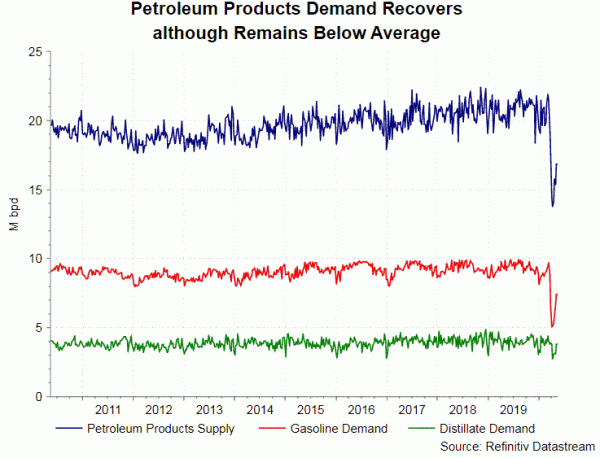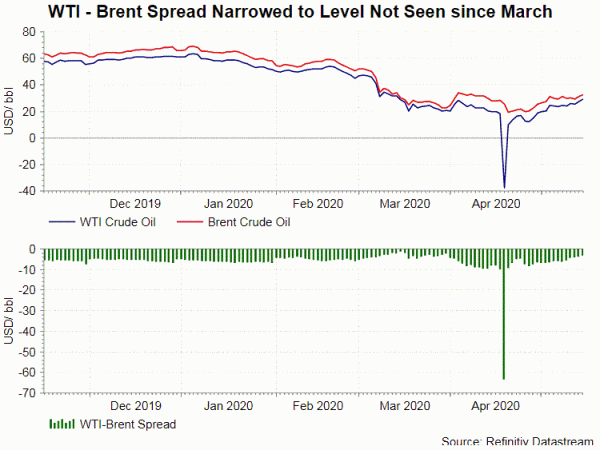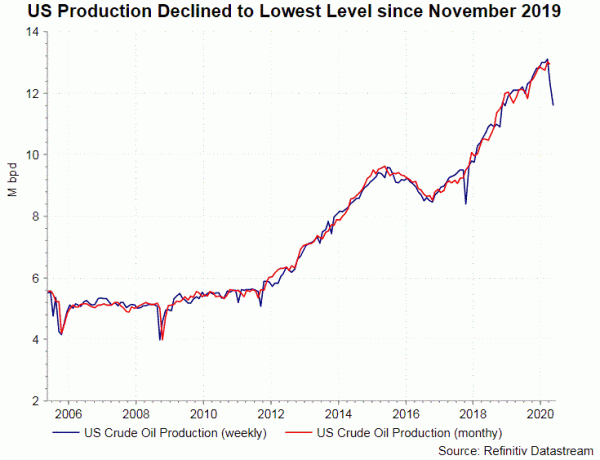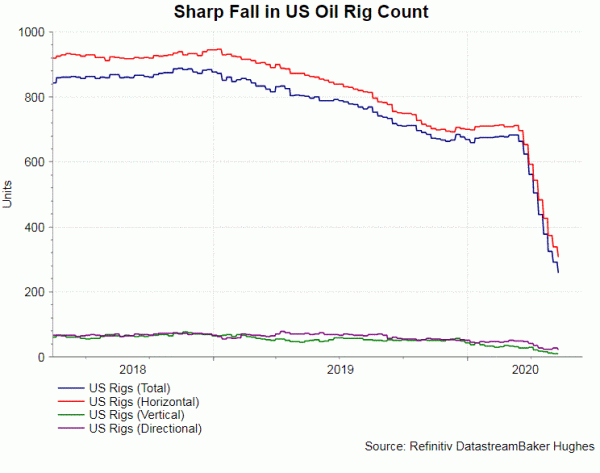Expiring tomorrow (May 19), the front-month WTI crude contract continues to climb higher. At the time of writing this report, price is trading narrowly around US$30/bbl, up almost 50% from end of April. Recall that last month, the WTI futures for April delivery collapsed to the negative territory before expiry amidst the lack of storage capacity. Oil market fundamentals have improved over the past few weeks. It is unlikely for us to see another collapse in WTI crude oil futures this month. Indeed, deceleration in stock-build, reduction in US production and better global demand outlook will continue to lend support to WTI crude oil price in coming weeks. Yet, upside would be limited given the possibility of resurgence in coronavirus outbreak and uncertainty in the pace of global economic recovery.
Last week’s inventory report showed an unexpected decline in US crude oil inventory. Indeed, addition in crude stockpile has slowed for consecutive weeks since the week ended April 10. Similarly, Cushing stock declined, following deceleration in stock-build from the peak in early April. This has offered relief to traders as Cushing is the delivery point of WTI crude oil on expiration.
US oil production has also shown significant decline. Output fell to 11.6M bpd in early May, down -11.5% from the peak in March. The reduction was a remarkable -300K bpd last week, indicating that producers are cutting output from existing wells. Besides, Baker Hughes’ data suggest that the number of oil rigs in the US, falling since mid-March, shrank to a 11-year low of 285 last week. There will be further confirmation that US producers are cutting output with the release of EIA’s monthly report on May 29.
The demand side of the equation has also improved. In the US, gasoline demand has rebounded +45.9%, while distillate demand has recovered +38.5%, from the troughs in April. Meanwhile, the Paris-based International Energy Agency (IEA) revised higher its global demand forecast. The agency projects demand to decline by -19.9M bpd in 2Q20 from the same period last year, marking an upward adjustment of 3.2M bpd from April’s estimate. It noted that the revision was driven by “better than expected mobility in OECD countries and the gradual easing of lockdown measures”.
Risk of crude oil price is skewed to the downside in 2H20. Second wave of coronavirus outbreak in China and the pace of global economic recovery could cap the recovery in oil price and resume selloff. Indeed, IEA downgraded slightly full-year 2020 demand outlook, expecting it to fall -8.6M bpd. This is mainly driven by less optimistic outlook in the second half. Separately, US EIA downgraded its demand forecasts for the coming 3 quarters, and hence for full- year 2020. Global demand is expected to decline to 92.61M bpd from 100.74 in 2019, compared with 95.52M bpd estimated in April. Demand in 2021 will probably recover to 99.61M bpd, compared with 101.93 projected in April.
















